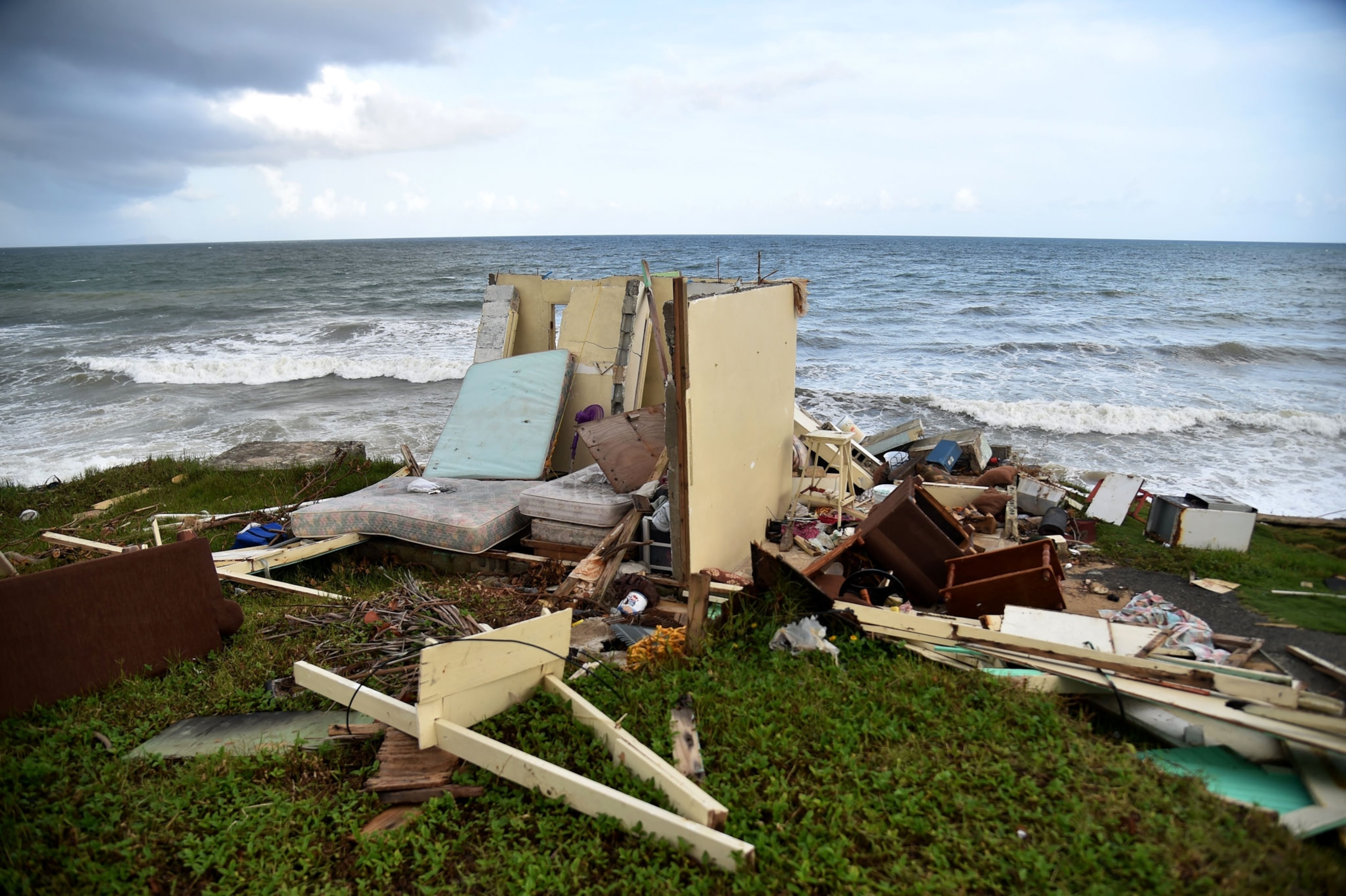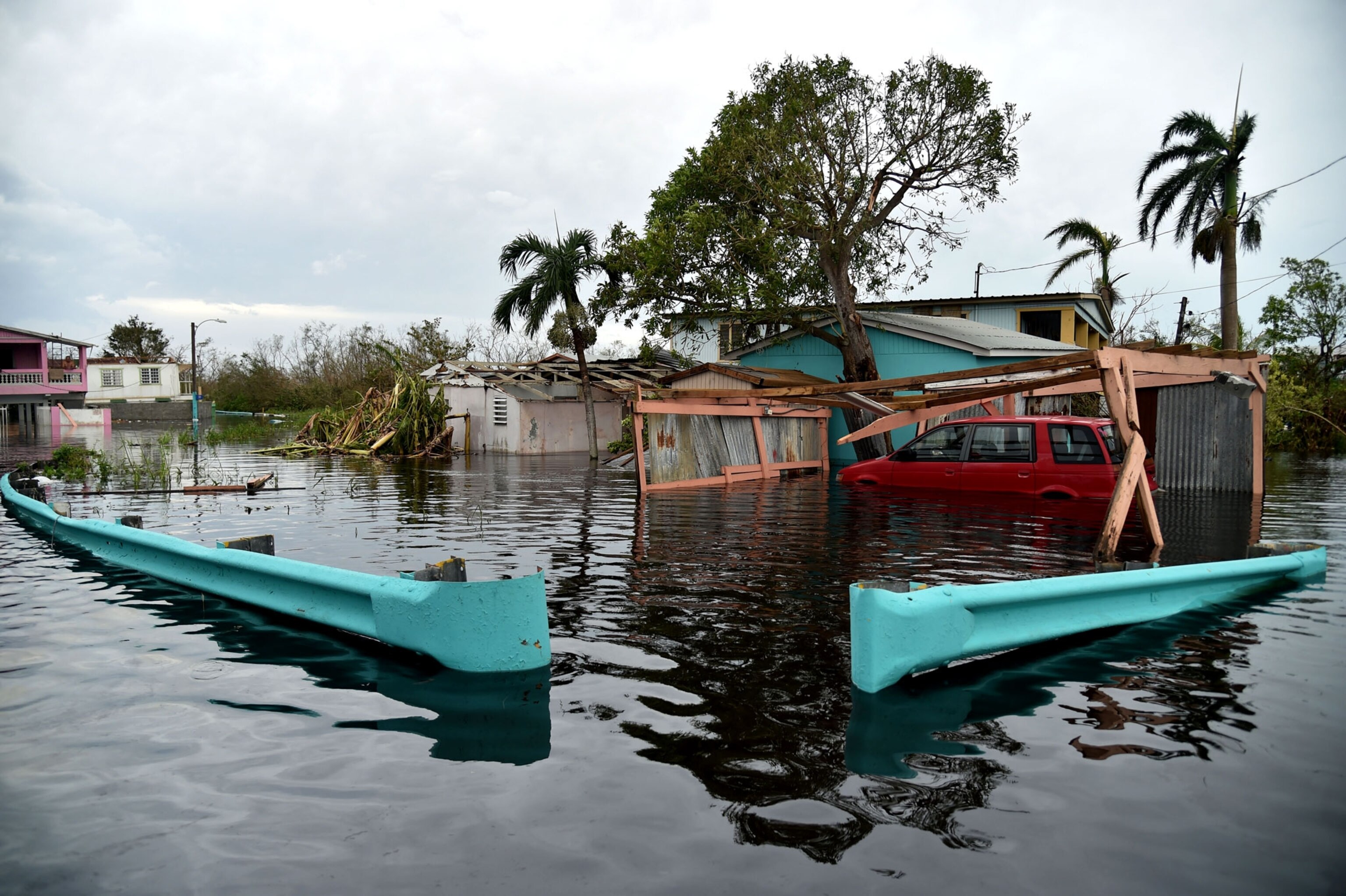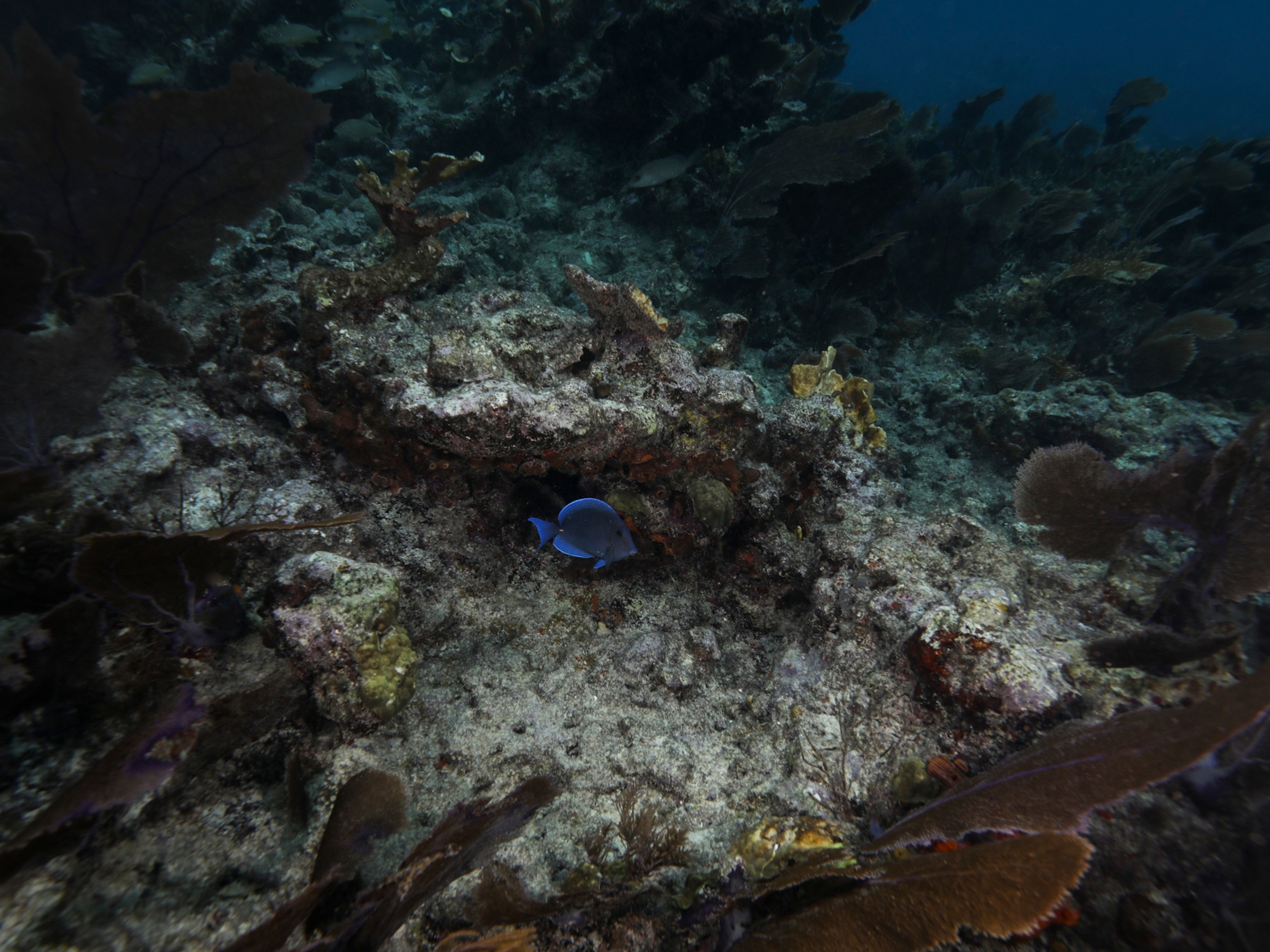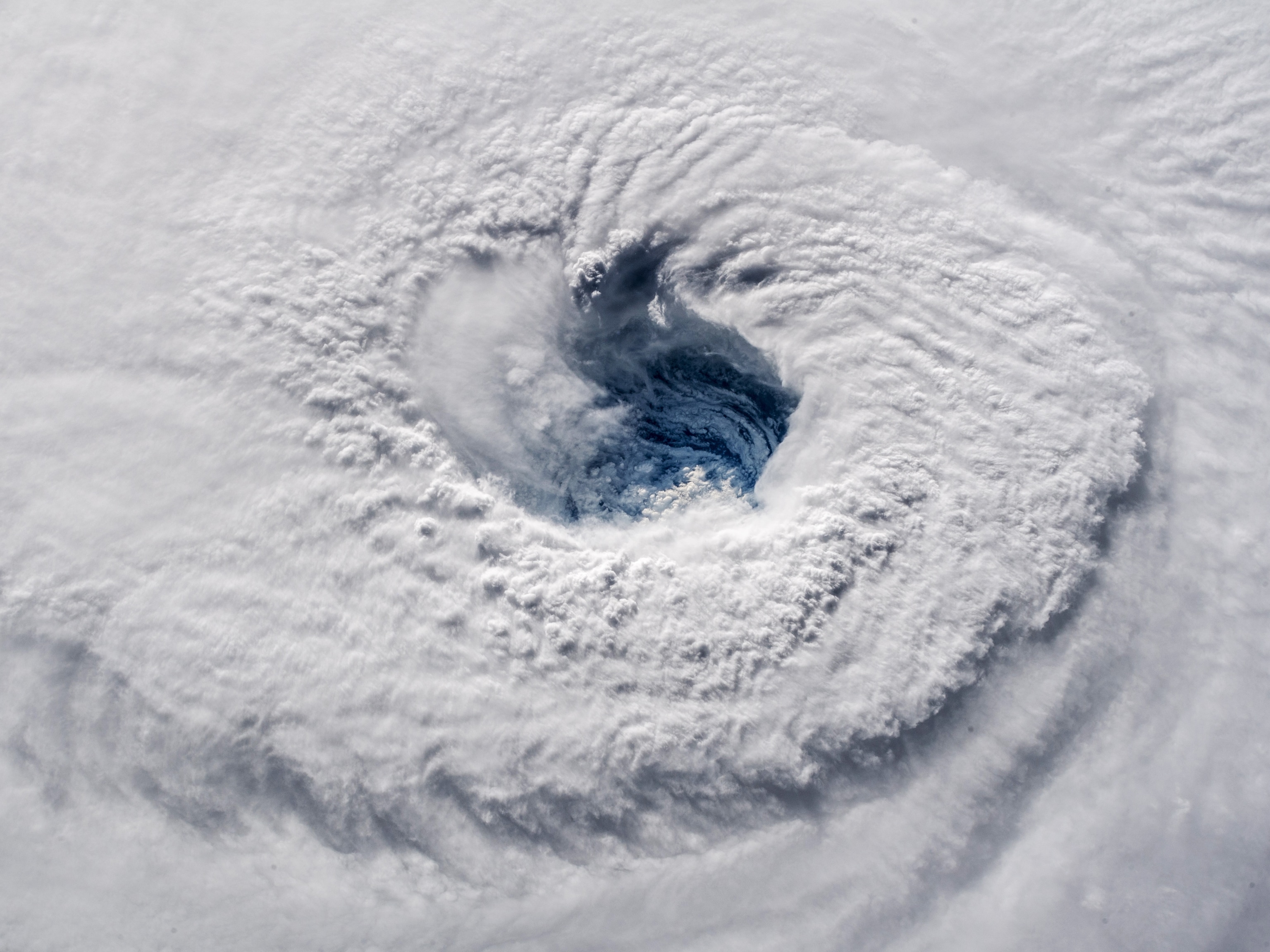
Can We Engineer a Way to Stop a Hurricane?
A horrible hurricane season has revived the old dream of throttling the storms—perhaps by cooling the warm seas that energize them.
Since late summer, as hurricanes Harvey, Irma, Jose, Maria and Nate spun up over the ocean and headed for North America, the phone calls and emails have been pinging into the office of Frank D. Marks, director of hurricane research at the National Oceanic and Atmospheric Administration in Miami.
For three decades, before and after big storms, Marks has been bombarded with imaginative ideas on how to weaken or destroy them: Why don’t we nuke them? Or drag icebergs into their path? Or cover the sea with some kind of film to stop the evaporation that feeds their intensity?
So far, says Marks, none of the proposals, whether from inventors in their garages or Ph.D. physicists in their labs, “has come close to capturing the complexity of hurricanes – or the risks” of meddling with one.
But as climate change amplifies the risks of Category 4 and 5 hurricanes, in part by warming the tropical sea surface that provides their energy, it’s also amplifying the question: Could we cool the seas to lower the odds of another hurricane season like 2017?
“These are not acts of God,” says meteorologist Alan Gadian, senior scientist at the U.K.’s National Centre for Atmospheric Sciences, “but a direct consequence of making the atmosphere more unstable due to seawater being warmer than average. They will occur again.”
Gadian is among a group of scientists pursuing research to cool strategic parts of the warming sea, such as the Gulf of Mexico or the Atlantic’s hurricane alley between Africa and the Caribbean. Whether such technologies will work – and prove more practical than dragging icebergs from the poles to the tropics – is only the first question. The second is whether they could cause more harm than they aim to stop.
How to Cool an Ocean
Sea surface temperature must reach at least 80 degrees Fahrenheit to birth a Category 4 or 5 storm. Computer models predict increases in the frequency of these most-intense storms, especially in the Atlantic, as the globe continues to warm.
Some scientists, convinced we won’t rein in our carbon emissions soon enough to avoid a planetary disaster, are urging research into ways to cool the planet through “geoengineering.” One strategy would be to pump sulfates or other aerosol particles into the stratosphere, where they’d spread around the planet and reflect sunlight back to space.
By cooling the entire Earth, the sulfates might well weaken Atlantic hurricanes, according to models by a global consortium of climate scientists convened by the National Academy of Sciences. But the research also reveals severe risks to global climate. Geoengineering might exacerbate drought in Africa’s Sahel region, for instance, or disrupt the Asian monsoon.
Gadian and his partners argue that a more regional geoengineering scheme might target hurricanes with less risk of global side effects.
One possible approach is “marine cloud brightening,” first proposed in 1990 by cloud physicist John Latham at the National Center for Atmospheric Research in Boulder, Colorado. The idea is to infuse clouds with particles of sea salt, around which water vapor would condense to form droplets. The more droplets in a cloud, the whiter it is and the more sunlight it reflects, cooling the sea below it.
Gadian and marine engineer Stephen Salter, an emeritus professor at the University of Edinburgh, have proposed that marine cloud brightening could be deployed prior to hurricane season to cool the hot spots that give rise to superstorms. Along with Latham they envision a fleet of ships that would draw up seawater and spray stratocumulus clouds overhead with a constant mist. If the ships plied the Atlantic south of hurricane alley and started spraying in November, Gadian says, ocean currents would carry the cooled water north into the alley in time for the next hurricane season.
Another approach would be to make the sea itself more reflective, rather than the clouds above it. Bubbles whiten water, as in a boat wake or a waterfall. Physicist Russell Seitz conceived “Bright Water” to cool the seas or reduce evaporation from freshwater reservoirs. In the case of hurricanes, he theorizes that ships pumping microscopic bubbles into their wake along tropical storm tracks could cool the water at lower cost than ships spraying the sky—and with less risk of affecting the weather elsewhere.
Finally, it would be possible in principle to cool the sea by stirring it, mixing warm surface water into the cold depths and bringing cooler water up. Some years ago Salter imagined a way of doing this passively, using wave energy.
In his scheme, an array of long vertical tubes, hanging like drainpipes from enormous floating rings, reach down into the cold water. As waves lap over the rings, the water level inside them rises above the surrounding sea, pushing the whole column of warm water downward—and forcing cooler water up to the surface.
After Hurricane Katrina in 2005, Seattle-based Intellectual Ventures, co-founded by former Microsoft chief technology officer Nathan Myhrvold, took up Salter’s idea. They envisioned the deployment of thousands of “Salter Sinks” across the Gulf of Mexico to inoculate major cities against hurricanes.

One drawback to the scheme was that all those giant drains would drift unmoored through a stormy sea. In a related patent filed by Salter, Myhrvold, Latham, and ten others, including Bill Gates and climate scientist Ken Caldeira of the Carnegie Institution for Science at Stanford, the floating rings became tubs that might be self-propelled or anchored to the seafloor. The “vertical ocean pumping” vessels would use both wave energy and pumps to mix seawater, lowering its surface temperature.
But nearly a decade later they, like other hurricane-control strategies, remain theoretical.
What Could Possibly Go Wrong?
Even a regional geoengineering effort could go dangerously awry. Cooling a big enough swath of ocean to suppress a hurricane could put rainfall at risk in distant drought-prone regions – or upend the climate in some other way.
The fundamental problem is that hurricanes are connected to the global atmospheric and water cycles. They have a crucial function, says meteorologist Mark A. Bourassa of Florida State University: They move large amounts of energy away from the equator. If they can’t do their job, the tropics could become even warmer —and mid-latitude weather patterns could change in unknown ways.
Trying to suppress hurricanes could actually make their formation more likely, or storms could just move somewhere else. “Locations downwind are most likely to experience unexpected changes,” Bourassa says. “That would be the Caribbean and the Americas.”
At the National Hurricane Center, Marks points out that federal scientists already spent half a century figuring out the government shouldn’t take such risks. In 1947, the U.S. military partnered with General Electric on an early weather modification experiment called Project Cirrus. That October, the Cape Sable Hurricane roared through Miami, causing catastrophic flooding. Then it exited to the Atlantic, where it lingered offshore.
GE and military scientists decided to try what the New York Times called their “daring meteorological experiment … to determine whether or not the colossal vortex that we call a hurricane can be broken by making it precipitate the thousands of tons of water that it contains.” A Navy pilot flew into the storm and dropped a couple hundred pounds of dry ice into a wall of clouds. Almost immediately, he witnessed what he described as “a profound modification.”
The next day, the storm changed direction and barreled into Georgia’s Tybee Island.
Fight or Flight
Scientists long disagreed about whether the dry ice or a ridge of high pressure had turned the storm toward Georgia. Grady Norton, the legendary meteorologist who invented hurricane tracking, was convinced it was the cloud seeding. The idea of trying to throttle hurricanes fell into public disfavor. And after a two-decade federal experiment called Project Stormfury failed to control hurricanes with silver iodide seeding, the idea fell into scientific disfavor, too.
Marks thinks it should stay there. He’s skeptical that the cooling technologies are even feasible. Given the risks and uncertainties, he says, “our resources are better spent trying to warn people, and to keep them out of harm’s way.”
Caldeira agrees that hurricane-modification research is “very much secondary” to steering people and assets out of areas with repeated storm losses – and also to reining in greenhouse gas emissions. But he and other scientists working on the technologies say that, with the planet warming and the risk of intense hurricanes rising, the research is worth the investment.
For now, researchers are taking small steps. Caldeira’s lab is investigating vertical ocean pumping to see if it may hold promise for alleviating pollution, such as in dead zones. Seitz hopes to test the potential of his water-brightening technology for reducing evaporative water loss in reservoirs. In the UK, Salter and Gadian have proposed small-scale experiments for marine-cloud brightening to test the spraying apparatus and model the impact on regional rainfall.
“The resources needed for the research are infinitesimal,” Caldeira says, compared with the costs of a Harvey, an Irma, or a Maria. In time, with more hurricane seasons like 2017, the risks of trying to subdue a hurricane may come to seem more acceptable too.
Follow Cynthia Barnett on Twitter.







